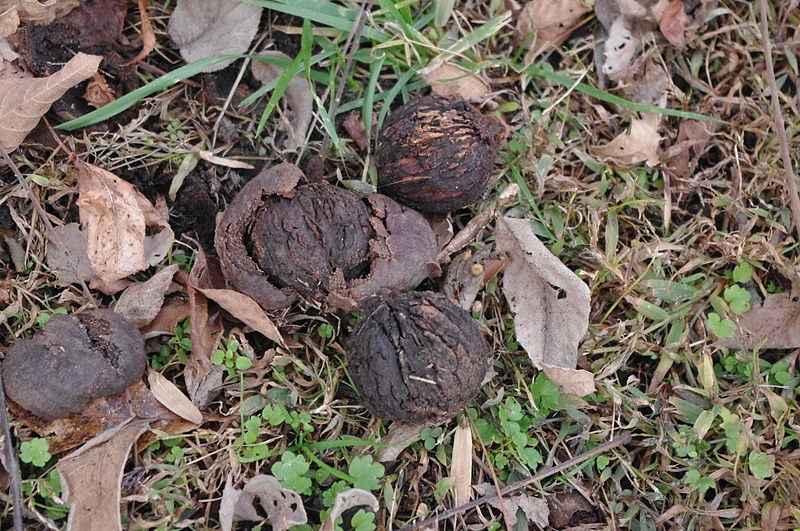Eastern Black Walnut (Juglans nigra L.) : Medicinal and Ethnobotanic Uses

Black Walnut hulls have antimicrobial qualities and can be finely crushed to make a powder ("Black Walnuts with Hulls" by Albert Herring, 2012).
The green hulls of black walnuts have antifungal and antiparasitic constituents since they have high concentrations of tannins, which are antibacterial. As a result, hulls can be made into powders and tinctures to cure athlete’s foot and other fungal infections such as diphtheria and syphilis. It is also beneficial to apply to wounds, again since the black walnut contains high levels of tannins, which are helpful in reducing pain and swelling, as well as avoiding infection.
Several Native American groups used different parts of the black walnut tree to treat various ailments and assist in their daily activities and diet. The Cherokee in particular chewed on the bark for toothaches and also used it to make a tea that served as a laxative. The Cherokee and Comanche also ate the actual nut, as it is very nutritious, high in protein, healthy unsaturated fats, and full of rich minerals and vitamins. Both the Cherokee and Chippewa used the bark to make black and brown dyes, a legacy that continues in some places. The Comanche Indians made a paste from the leaves and husk of the fruit to treat ringworm. The black walnut was also used to heal athlete’s foot and hemorrhoids by the Cherokee, Comanche, Iroquois, Appalachian, and Rappahannock. In addition, black walnuts were a staple in the diet of Abenaki who liquefied the cooked nuts as a substitute for breast milk, similarly to the Iroquois who crushed the nutmeat and then boiled the nuts to create a liquid that they then drank.
For further medicinal interest:
A renowned Vermont-based herbal practitioner, teacher, and author, Rosemary Gladstar includes an easy-to-make antifungal powder recipe using black walnut hulls to treat athlete’s foot (a fungal infection of the feet) in her book Herbal Recipes for Vibrant Health.
Gladstar, Rosemary (2008). Rosemary Gladstar’s Herbal Recipes for Vibrant Health. Storey Books.
